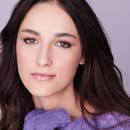In response to the second season of Euphoria, a representative from D.A.R.E. told TMZ, “Euphoria chooses to misguidedly glorify and erroneously depict high school student drug use, addiction, anonymous sex, violence, and other destructive behaviors as common and widespread in today’s world.” Keyword: “erroneously.” Since the show’s premiere in 2019, it’s generated a slew of controversial opinions (on teen drug use, graphic nudity, sex, violence). Euphoria is a show about teenagers that parents are hesitant to let their teenagers watch.
It is marketed as an unflinching glimpse at high school life today, yet one of the most frequent critiques of the show is that it’s “unrealistic” (and there’s a TikTok trend to prove it). Burgeoning sexuality, drug usage, societal pressures—these are all very real and certainly associated with the high school experience. So why do so many people view Euphoria as unrealistic? What might render it the more “authentic” representation showrunner Sam Levinson intended it to be?
I saw a TikTok the other day that asked something along the lines of “why aren’t there kids like the ones from High School Musical: The Musical: The Series in Euphoria?” Countless comments agreed the kids from H.S.M.T.M.T.S. could (hypothetically) go to “Euphoria High.” However, they decided we don’t necessarily see those kids in the show because it’s concentrated on another group of students. While this seems a stretch, I agree that Euphoria is hyperfocused. The audience only gets to know ten or so main characters, and these main characters face a host of traumatic experiences. Because the show is so centered on these few, it seems they are representative of the entire student body.
But are Maddie, Cassie, Rue and the rest of the crew characteristic of the American high school student? Shockingly, in 2019 (the year Euphoria premiered), a record low of 38.4% of high schoolers reported that they had ever had sex. This is a massive decrease from 46% in 2009 and 54% in 1991. Yet, not only has almost every character in Euphoria had sex, but they do so regularly.
Likewise, nearly every character in the show has done drugs (or, once again, do so regularly). Though the number of high schoolers that have tried “illicit drugs” is higher than those that have had sex, it is still less than half at 46.6%. It seems that the main characters of Euphoria represent the minority rather than the general high school population.
So, what might make Euphoria more “realistic”? The answer might be pretty simple: set Euphoria in college. According to Seventeen Magainze, 60% of college students have had sex (compare this with 38.4% of high schoolers). Furthermore, drug abuse is most significant in ages 18-25, encompassing the typical college years. Now, this obviously wouldn’t render the show perfectly realistic. After all, a group of characters will never perfectly embody an entire population. But, the statistics line up a lot better, with some key numbers shifting to represent the majority rather than the minority.
That isn’t to say that the events of Euphoria are impossible or even that similar events do not occur in American high schools. Sam Levinson did draw from his personal experiences with drug addiction in high school. In fact, that scene in the first season when Jules cuts herself with a kitchen knife was something Levinson actually did. Regardless of whether it was set in high school or college, it is unlikely Euphoria wouldn’t have faced some controversy. In Levinson’s words, “…certain people will be freaked out by it, and other people will relate to it.”


